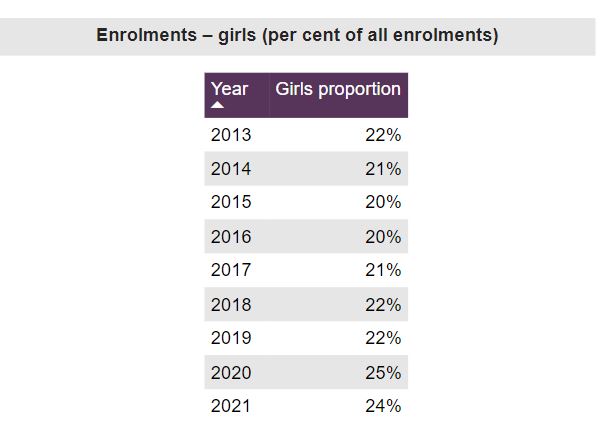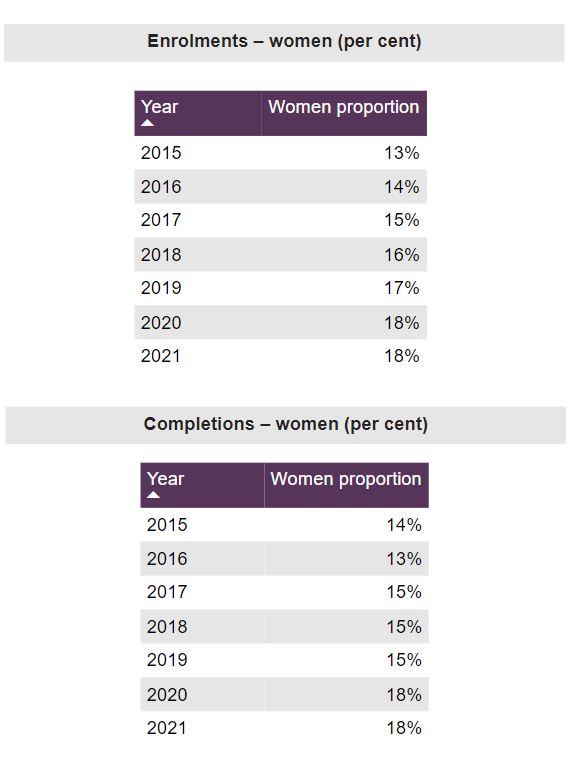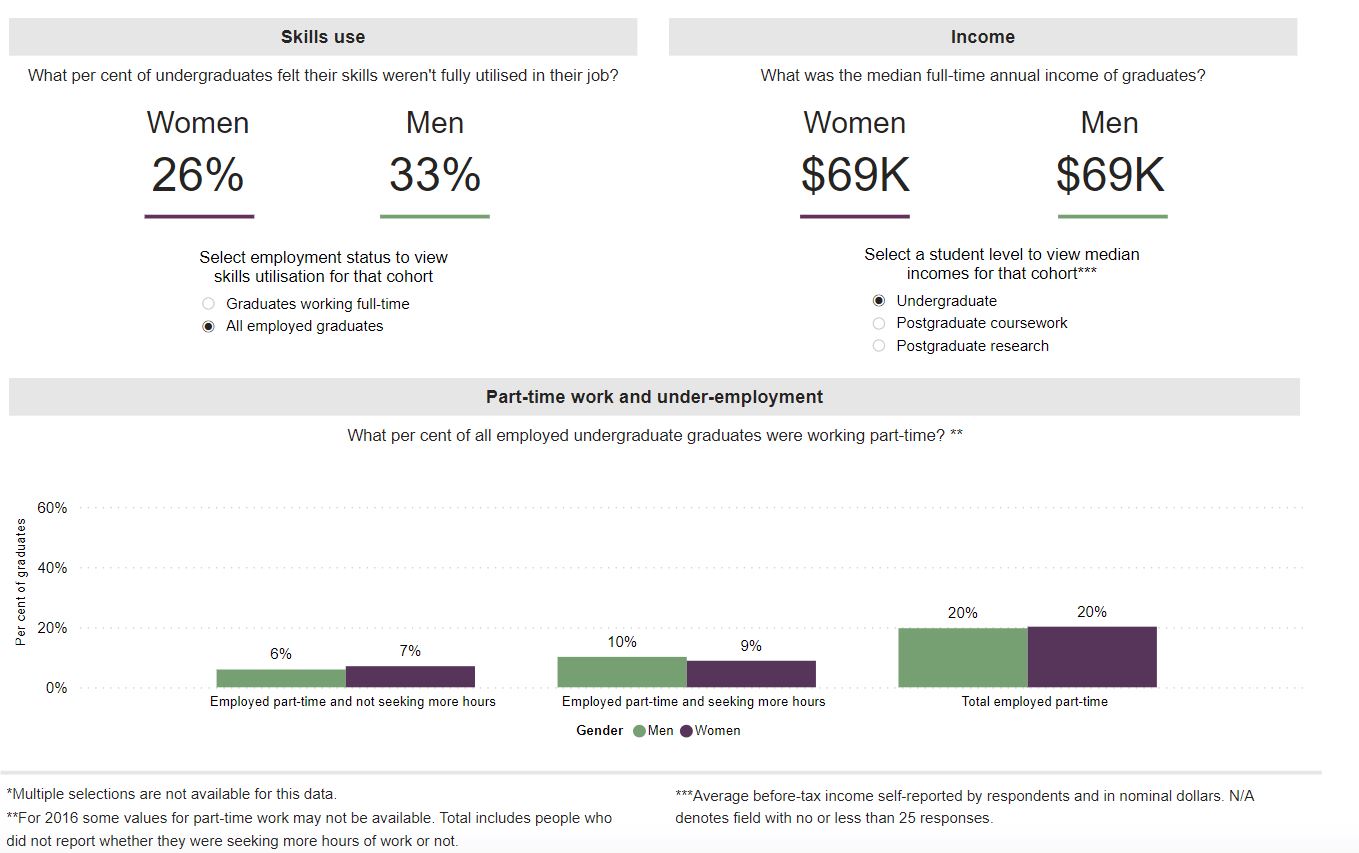However however the tech sector is doing better than other STEM disciplines in offering wage parity between female and male graduates and better prospects for those entering the workforce.
Published by the Federal Department of Industry, Science and Resources, the report is in its fourth year, having being first published in 2020, and draws upon data from a range of sources including the Bureau of Statistics, the Australian Public Service Commission and the Workplace Gender Equality Agency.
The findings underscored the low female IT industry participation rates highlighted in the annual ACS Digital Pulse report and indicates the low levels of the diversity in the sector’s skills pipeline with only 25% of enrolments in Year 12 IT related courses being female.
The proportion of women in Year 12 courses has barely moved since the 22% reported in 2013, despite an upward blip in 2020, which indicates the constant 28-30% female participation rate in the IT sector reported over the past nine years by Digital Pulse is unlikely to increase over the rest of this decade.
Good news in the report was for the wider STEM field with the number of enrolments in year 12 subjects increasing from 2020 to 2021 for both girls (up 1,529 enrolments or 0.9%) and boys (up 1,238 enrolments or 0.7%). In contrast, the number of girls enrolling in non-STEM subjects decreased by 603 (0.2%), while the number of boys increased by 1,087 (0.4%).
Equally, parents continued to be enthusiastic about the importance technology with the report finding 87% think technology skills were important for the future workforce in a survey carried out by YouthInsight as part of the report.
Despite parental enthusiasm for technology skills, the transition to university was equally poor in terms of gender balance with the report finding only 18% of undergraduates in IT courses were female, further indicating that moving the gender balance beyond 25% remains a long way off.
The vocational sector was substantially better than the tertiary institutions in gender diversity however the proportions have been falling substantially over the past seven years.
The good news for the women who did graduate with IT qualifications is they felt more valued by industry after graduating with no salary gap being reported and most female graduates feeling they were better utilised than their male colleagues.
For Australia’s technology industry, the report makes sobering reading. It illustrates the sector’s long-standing gender imbalance is going to continue for at least the next decade.
Credit: Source link





Comments are closed.